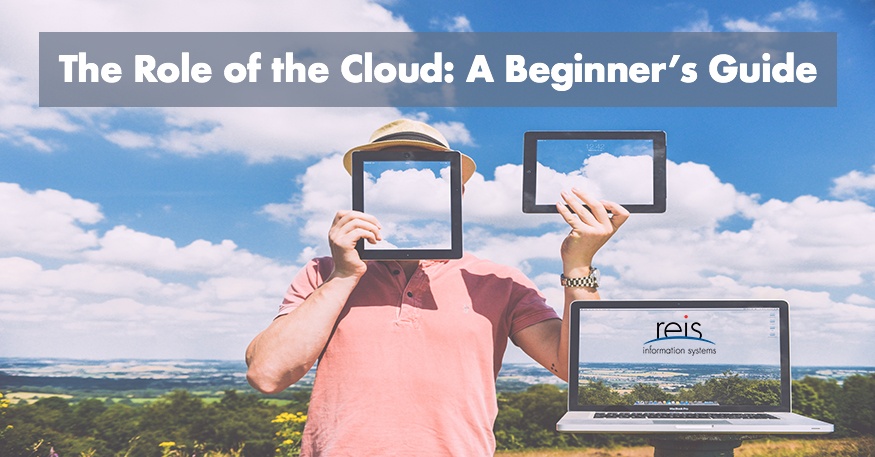What exactly is cloud computing? To put it in simple terms, cloud computing is the delivery of computing services (for example: servers, storage, databases, networking, software, analytics) – over the Internet (“the cloud”). Companies that offer these services are called cloud providers and usually charge for cloud computing services based on usage, similar to how you’re billed for water and electricity.
In this post, you can understand the basic cloud computing jargon and concepts.

Uses of Cloud Computing
Even if you don’t realize it, you are probably using cloud computing right at this moment. If you use an online service where you can send emails, edit documents, watch movies and/or TV, listen to music, play games, store files and pictures, it’s very likely that the cloud is making it possible for you to do all of these things behind the scenes. The first cloud computing services are barely a decade old, and a variety of organizations – start-ups, global corporations, government agencies, not-for-profits – are embracing this technology for a variety of reasons.
These include:
- Creating new apps and services
- Store, back-up, and recover data
- Host websites and blogs
- Stream audio and video
- Deliver software on demand
- Analyze data for patterns and make predictions
Why You Should Consider Moving to The Cloud
Cloud computing has made a big shift from the traditional way companies think about IT resources. Below are 6 common reasons why companies are turning to cloud computing services:
- Cost
The cloud reduces the capital expense of purchasing hardware and software, and the setting up and running on-site data centres. This includes the racks of servers, round-the-clock electricity for power and cooling, IT experts managing this infrastructure. Long story short, these tasks add up quickly.
- Speed
Most cloud computing services are provided self-service and on demand. Meaning that even vast amounts of computing resources can be provisioned in minutes. Usually with a few clicks, giving companies more flexibility and taking pressure off capacity planning.
- Global Scale
The benefits to cloud services include the ability to scale elastically. Which basically means delivering the right amount of IT resources (example, more or less computing power, storage, bandwidth) right when it’s needed, and from the right location.
- Productivity
On-site data centres usually require lots of “racking and stacking” – hardware set-up, software patching, and other time-consuming IT chores. Cloud computing takes away the need for many of these tasks. Therefore, IT teams can spend time on achieving the more important business goals.
- Performance
The largest cloud computing services run on a worldwide network of data centres. These are regularly updated with the latest generation of fast and efficient computing hardware. This offers many benefits over a single corporate data centre, including reduced network latency for applications and greater economies of scale.
- Reliability
The cloud makes data backup, disaster recovery, and business continuity easier and less expensive. This is because data can be mirrored at multiple redundant sites on the cloud provider’s network.
Types of Cloud Services: IaaS, PaaS, SaaS
Most cloud computing services fall into 3 broad categories: infrastructure as a service (IaaS), platform as a service (PaaS), and software as a service (SaaS). These categories are sometimes called the cloud computing stack because they build on top of each other. Knowing what each of these categories are and how they’re different makes it easier to accomplish corporate goals.
- Infrastructure as a service (IaaS)
This is the most basic category of cloud computing services. With IaaS, you rent IT infrastructure. For example, servers and virtual machines (VMs), storage, networks, operating systems. These are rented from a cloud provider on a pay-as-you-go basis. - Platform as a service (PaaS)
PaaS refers to cloud computing services that supply an on-demand environment for developing, testing, delivering, and managing software applications. This is designed to make it easier for developers to create web or mobile apps quickly, without having to worry about setting up or managing the underlying infrastructure of servers, storage, network and databases needed for development. - Software as a service (SaaS)
SaaS is a method for delivering software applications over the Internet on-demand and usually on a subscription basis. Cloud providers host and manage the software application, underlying infrastructure, and handle any maintenance (for example, software upgrades, security patching). Users connect to the application through the Internet. This can be through a web browser on their phone, tablet, or PC.
Types of Cloud Deployments: Public, Private, Hybrid
Just like people, clouds are not all the same. There are 3 different ways to deploy a cloud computing resource: public cloud, private cloud, and hybrid cloud.
- Public cloud
This type is owned and operated by a 3rd party cloud service provider. This provider delivers their computing resources like servers and storage over the Internet. For example, Microsoft Azure. With using a public cloud, all hardware, software, and all other supporting infrastructure is owned and managed by the cloud provider. You are able to access these services and manage your account using a web browser. - Private cloud
This type of cloud refers to cloud computing resources used exclusively by a single business or organization. A private cloud can be located physically on the company’s onsite data centre. But, some companies also pay a 3rd party service providers to host their private cloud. This type of cloud is one in which the services and infrastructure are maintained on a private network. - Hybrid cloud
These clouds combine both public and private clouds. Meaning that they are bound together by technology that allows data and applications to be shared between them. By allowing data and applications to move between public and private clouds, the hybrid option gives companies greater flexibility and more deployment options.
How Does Cloud Computing Work?
Cloud computing services all work a little differently, depending on the service provider. Many provide a friendly, browser-based dashboard that makes it easier for IT professionals and developers to order resources and manage their accounts. Some cloud services are designed to work with REST APIs and command-line interface (CLI), which gives developers multiple options.
We hope that this article was able to give you a bit more clarity on what exactly cloud computing is.
Still have questions? Feel free to leave comments in the comment section below.
References
What is cloud computing? A beginner’s guide | Microsoft Azure. (n.d.). Retrieved from: https://azure.microsoft.com/en-ca/overview/what-is-cloud-computing/

